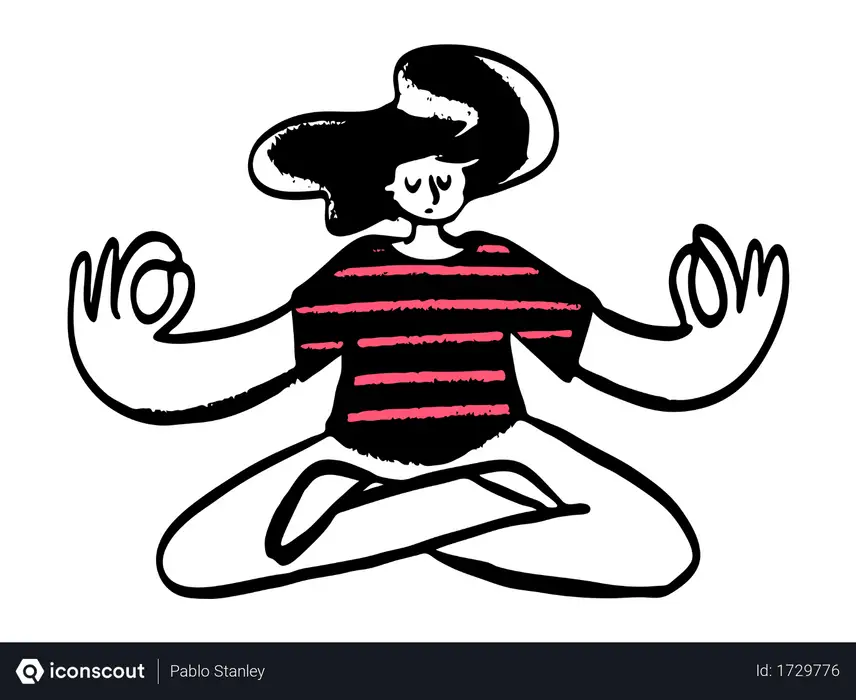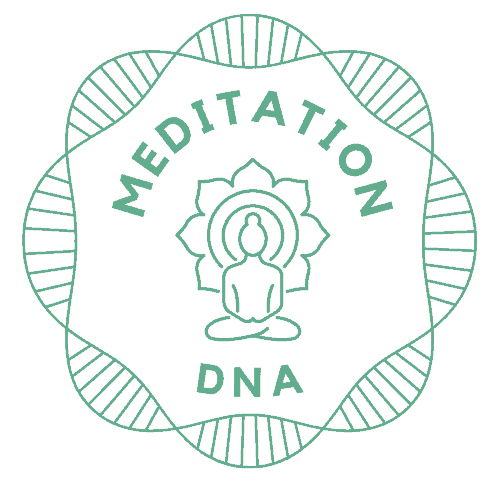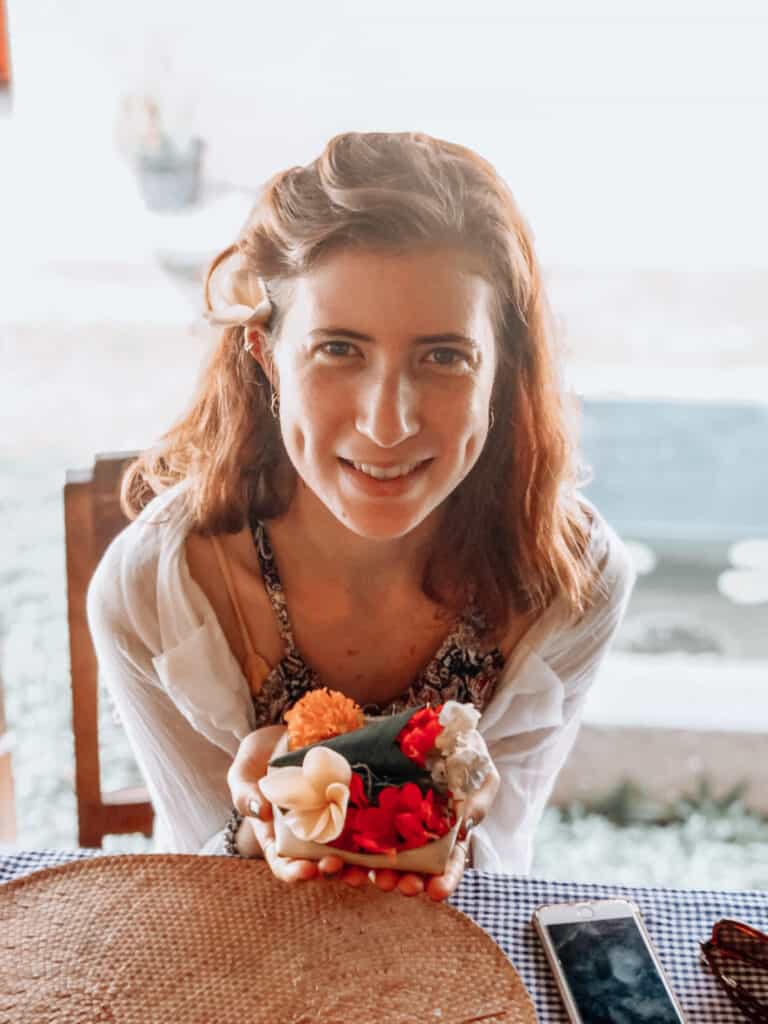
The practice of meditation and mindfulness have really escalated in the last few years but what’s the purpose of meditation? How can it elevate our lives? Many people are seeing the benefit it has on their minds as well as their bodies and as a result, living more fulfilled and happier lives.
Some might still be on the fence if what meditation is for them… and some might be wondering what is the real purpose behind meditating?
So let’s touch on what it means to meditate and if it makes sense for you and your health.
Meditation is about being present in the moment and gaining insight into yourself. According to traditional philosophies, you’re trying to achieve a state of mind called divine concentration, or samadhi.
There are many different types of meditation, but most involve focusing and drawing your attention to something (such as your breath) or repeating a mantra (a word or phrase).
When you meditate, you try to be completely focused on the happenings of the mind and the internal landscape of your thoughts, feelings, and emotions to create a full-body state of relaxation. This helps you gain self-awareness and perspective, and it can also improve your ability to concentrate on various areas of your life. Meditation leads to a more intentional and mindful existence which filters into everything we do and the way we approach life.
Before we continue into what it is it might be helpful to know where this practice originates from.
Where does mindfulness meditation originate?
Meditation’s true nature finds its roots in Buddhist meditation which is a practice that originated thousands of years ago in Asia. It was originally used by Buddhists in the Buddhist tradition and other Buddhist practices, but now it is practiced by many other religious groups including Hindus, Christians, Muslims, Jews, and others. It involves focusing your mind and drawing attention to your breath in order to reach a state of bliss or mental ease. As a result, it helps you slow down and relax the body. Today meditating is largely used as a tool for reducing stress.
Before we go into the purpose of meditation it is important to distinguish between mindfulness and meditation.
What are mindfulness practices?
Mindfulness means being aware of where you are and what’s going on all around you, without judgment. Meditation is therefore a form of practicing mindfulness. Mindful awareness lets you notice things before they happen. This includes noticing how your feelings affect you. For example, if you feel stressed, you might take deep breaths not to feel overwhelmed. The practice of mindfulness meditation can be incorporated into your daily life. If you notice these simple actions, you will be able to help yourself calm down faster. It takes practice to learn how to be mindful.
What is meditation – what’s the purpose of meditation?
Benefits of meditation
Meditation is a practice that connects your mind and body. It involves creating focus and awareness towards something while you breathe deeply. It can be done anywhere, but most people do it in a quiet place away from distractions. Everyone seems to be meditating these days but what’s the purpose of meditation?
When just starting out having the right setting to meditate in is helpful but once you become more comfortable with the concept of meditation you start to notice you can incorporate it into your everyday activities. This is the art of practicing mindfulness.
Meditating is useful because it helps you become calmer, and less stressed and helps with certain psychological distress which greatly improves your mental, physical and emotional health as well as your quality of life. That could be seen as the main goal of meditation.
It is important to approach meditating with an open mind as it strives toward mental liberation. It is through this surrender of the mind that we find the mind starts to transcend. Meditation is therefore not goal-orientated but it practices trusting the process. Less about the destination and more about the journey. Less about creating an empty or ‘nothing mind’ but more about taking on the role of ‘the observer’ within our minds. Using curiosity to explore our minds through self-observation and awareness.
So instead of seeing ‘the purpose of meditating as having a thoughtless mind, it is more helpful to take the approach of noticing the thoughts and then without attaching to these thoughts, feeling or emotions simply let them pass through your mind. So notice they are there but trying to release the control we have on them.
Visualizations while meditating can be very useful to achieve this because it draws our attention away from all the busy thoughts and towards a specific image in order to reach a calmer and relaxed mental state.
Breathing techniques allow us to access this focused attention even more as it once again gives us a singular thing to concentrate on. By controlling (or rather altering) our breath we access our parasympathetic nervous system which brings us into our ‘rest and digest’ state.
As we now know there are so many different ways to meditate and tap into a meditative state. It is all individual and it does not simply mean sitting in an upright position with your eyes closed. So let’s discuss some of these elements.
Elements of meditation – forms of meditation and meditative techniques
Different types of meditation may include varying features to help you meditate. These may vary according to individual preference, if you are being guided with a specific intention or style in mind or what kind of teacher you’re learning from.
Some of the most popular themes used in meditation include Focus, observation, intentional awareness, gratitude, release or let go, and surrender or it can also include techniques using certain objects, mantras, breathing exercises, visualizations, music, or movement.
For example, a physical activity – such as yoga, walking, dancing, or Tai Chi is a form of meditation as it focuses the mind on a singular movement and taps into a state of being in flow’.
Often meditation can bring up a lot of uncomfortable feelings, thoughts, or emotions when we self-reflect but then we also start to learn how to let go of negative feelings that may arise during meditation.
Focusing your attention is the best tool you can use to clear your mind and get rid of worries.
So what might all of this practically look like? Meditating is a practice so patience and compassion towards self are key. It can often feel frustrating or as if you are doing it wrong. It is important to know there is no right way to meditate because it looks and feels different for everybody.
https://chopra.com/articles/learn-to-meditate-in-6-easy-steps
Below we have highlighted a few things to help you along your journey of mindfulness.
Tips for mindful meditation and contemplative techniques:
- Use a mantra.
A mantra is a sound or specific word made by repeating something over and over again. Mantras help you relax because they calm the brain and reduce anxiety. eg. Chanting Ohm.
- Deep breathing
Deep breathing techniques use the diaphragmatic muscle to expand your lungs and help you breathe more efficiently. It forms part of relaxation techniques and the ability to focus on your breathing to achieve relaxation.
Meditation helps calm us down by slowing our breathing and relaxing us. The breath provides us something to focus on when we feel distracted by our thoughts to when we feel it is difficult to calm the mind down. When you need something else to focus on, try to stay focused on your breath. Otherwise, you may find yourself being distracted by thoughts about the stressor.
- Create the right environment
A quiet place, free from external distractions, dedicated to meditating can be very helpful in the beginning when you are new to meditating.
Meditation doesn’t necessarily require any specific place or time, but when we meditate effectively, our minds become calmer due to stress reduction. We then gain greater clarity about what we need to focus on during those situations. As we increase our skill level in meditation, we can do it anywhere and anytime.
- Take note of your posture – be intentional with your body
Remember meditating is all about creating intentional awareness within the mind as well as the body. Good posture is very important when practicing meditation, as you’ll want to stay relaxed and maintain proper posture. This helps you feel more comfortable and ready to meditate. Our body positioning sets the tone and the intention of our practice.
In the case of movement meditation, this comes even more into play as it links the mind-body connection and how these two spheres relate and communicate with each other.
- Open attitude.
Let thoughts pass through your mind without judgment. As soon as we judge ur thoughts we attach meaning or justifications to them. Try and think of your thoughts as neutral (they are not good or bad) and simply just allow them to pass through your mind. When we create an open mind we release ourselves of preconceived judgments or expectations and we trust that the meditation is providing us with exactly what we need at this moment. Practicing this detachment of thoughts allows us to also tap into being present.
Conclusion:
Meditation is a practice where you focus on yourself internally. It helps you improve your concentration, awareness, and self-mastery. While its benefits include stress relief, improved sleep quality, and lower cortisol levels, it also gives you the opportunity to reflect on your life. With meditation, you can ask questions such as: What do my actions mean? How does everyone else feel? What am I experiencing? Are these experiences beneficial or harmful? Through reflection, we learn more insight into ourselves, helping us grow as people.
In my experience as a meditation teacher, I’ve learned that people tend to practice meditation because they want to feel better. Meditation isn’t necessarily intended to help someone change their behavior or be healthier. However, over time, those who practice regularly notice improvements in both their health and well-being. Meditation may also help people develop insight into themselves and others.
The purpose of meditation therefore might even help us in figuring out our own life’s purpose.


